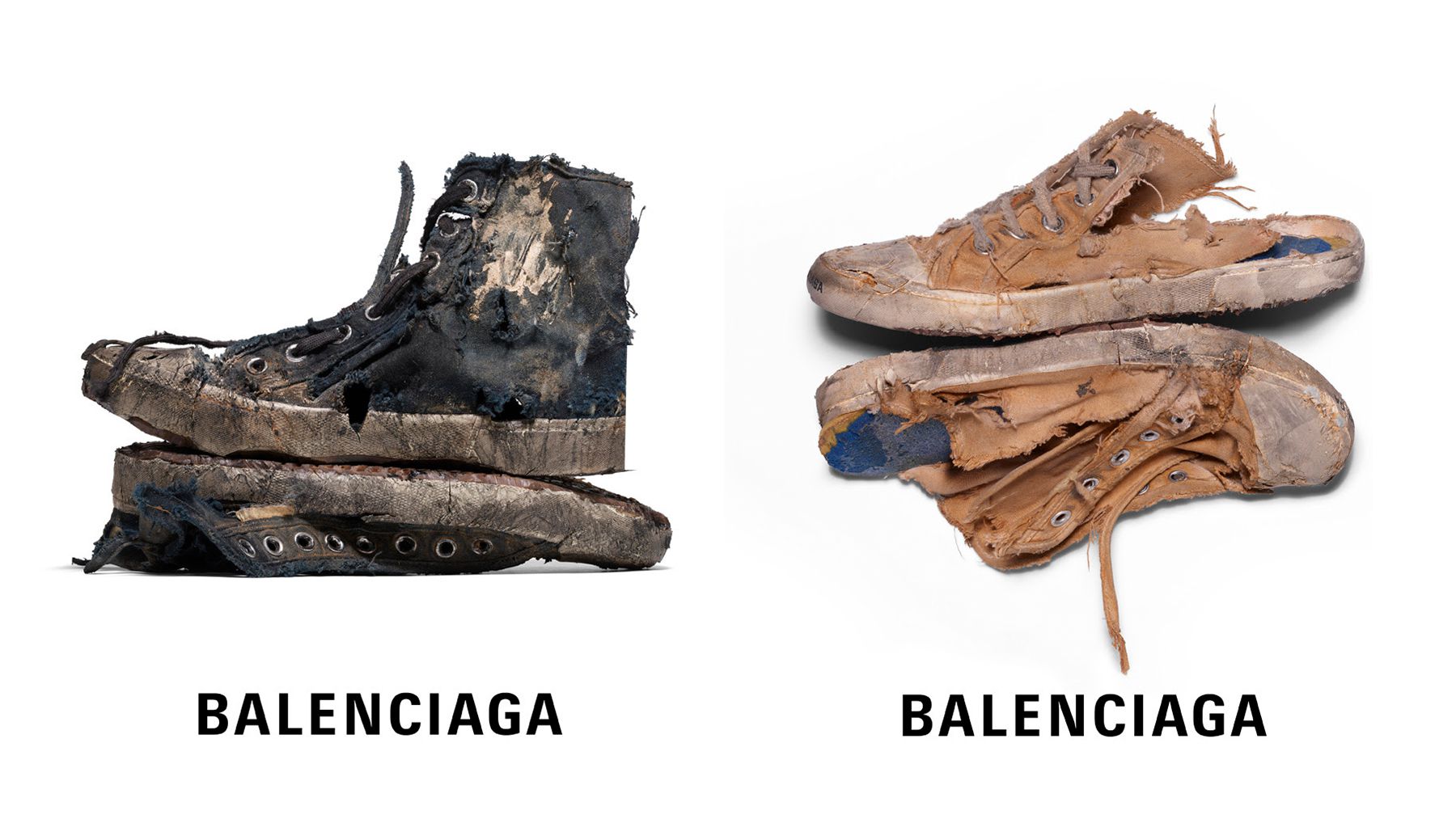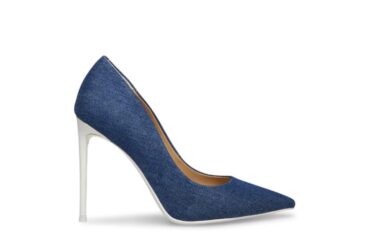
This week, tweets like “Balenciaga this has to be a joke right?” and “I’m 100% convinced that Balenciaga is a social experiment” flew across the internet.
The source of users’ ire was Balenciaga’s campaign for the new, distressed version of its Paris Sneaker, which showcased versions of the shoe that looked like they had been set on fire, put through a garbage disposal and then dragged through mud.
Public reaction was a mix of confusion and outrage, as social media users accused Balenciaga of taking the destroyed sneaker aesthetic, popularised by brands like Golden Goose, a step too far. Critics further lambasted the brand for peddling the macerated sneakers for thousands of dollars and accused Balenciaga of fetishising poverty.
Even as the online conversation around the campaign climaxed, the brand mostly kept quiet. It had initially circulated the campaign, shot by photographer Leopold Ducheim, to a select group of media players and tastemakers on May 9, stating that the purpose of picturing the sneakers in such a heavily-worn state was to “suggest that Paris Sneaker are meant to be worn for a lifetime.” The shoes’ sales strategy reflects that stance: while Balenciaga will sell 100 pairs of the limited edition extra-destroyed sneakers featured in the campaign for $1,850 each, the actual Paris sneakers — slightly distressed but still very much intact — start at $495, a much more accessible price point than most of the brand’s merchandise.
The campaign’s goal wasn’t to sell consumers on practically-falling-apart footwear, but to generate conversation. And for a brand known for risk-taking, displaying destroyed merchandise in a campaign isn’t a concern.
“They have zero risk. They’re Balenciaga,” said Gabe Miller, president of marketing agency Landor & Fitch, North America.
How to Win Buzz and Influence Consumers
With Demna, a frequent collaborator of Ye (the artist formerly known as Kanye West) and founder of similarly boundary-pushing brand Vetements, at the helm, Balenciaga has developed a reputation for subverting consumer expectations of luxury labels and driving conversation online. That intent shines through whether it’s high heeled Crocs, a collaboration with Yeezy Gap or the decision to completely conceal Kim Kardashian at last year’s Met Gala. For Balenciaga, this campaign — and the subsequent reaction — is business as usual.
“The message is clear: buy and keep forever,” wrote GQ France head of editorial content Pierre A. M’Pelé, also known by his online alias Pam Boy, on Instagram. “Demna … is completely turning the essence of luxury upside down. It annoys me, but it is genius.”
However, some responded with less admiration. Spanish actor and model Pelayo Díaz wrote “If Cristobal Balenciaga was alive and saw this, he would kill himself.” Others gave the campaign the meme treatment or slammed the brand for allowing “rich people to wear poverty as a costume.”
However, as the adage goes, “there’s no such thing as bad publicity,” and if the aim was to start a conversation, then the campaign was a success. It has generated almost $5 million in media impact value (MIV), a measure of conversation on social media, in just 48 hours, according to Launchmetrics. By comparison, Balenciaga’s Kim Kardashian campaign from earlier this year garnered $2.4 million in MIV in its first two weeks. The campaign is an example of the power of creating a self-sustaining conversation on social media. A marketing win in 2022 is less about one blockbuster moment, but the chain reaction that follows. That’s especially true, said Miller, in fashion, a space dominated by often-repetitive celebrity-fronted marketing.
The benefit of a celebrity play, though, according to Adam Adamson, co-founder of marketing agency Metaforce, lies in the fact it’s a proven formula. Brands want to know the marketing they’re spending on will hit. Creating outrage with risky concepts like the Paris Sneakers campaign can be difficult to execute and hard to maintain.
“The challenge of always breaking new ground is you gotta keep on doing it,” said Adamson. “It’s increasingly a harder game.”
Will It Lead to Sales?
Demna is adept at speaking pointedly to the Balenciaga consumer, as well as reflecting on the current moment. (Balenciaga’s Fall/Winter 2022 show in February, for example, featuring models trekking through a faux-snowglobe, called to mind images of refugees in the wake of Russia’s invasion of the Ukraine days before.)
And while this campaign’s purpose was clearly more about driving online discourse than driving sales, Balenciaga is likely betting the Paris Sneaker will ultimately do the latter, too. Traditionally, sneaker styles like the Triple S and Speed sneaker have been top performers for the brand. Priced more modestly than most of the brand’s merchandise, the Paris Sneaker could serve as an entry point for new customers.
It remains to be seen whether the online chatter will eventually fuel purchases, but for now, the campaign has done its job.
“They’re showing you a train wreck,” said Miller. “You can’t not look at it.”


